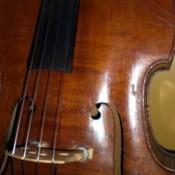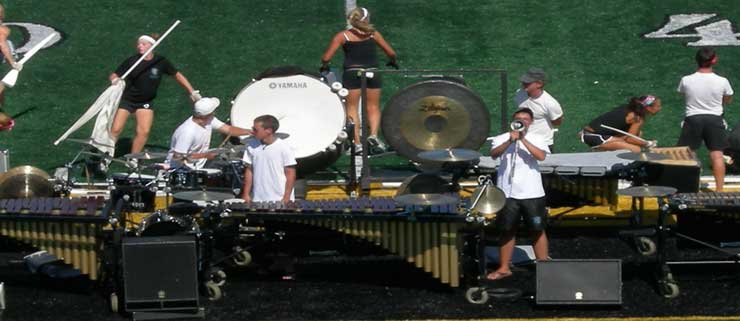 One thing that seems to give students a headache is choosing notes to construct a walking bass line. More often then not, the hang-ups are mental and can be easily remedied with some practice and a little theory knowledge. Let's look "under the hood" of walking lines to help and remove some of the mystery behind their construction.
One thing that seems to give students a headache is choosing notes to construct a walking bass line. More often then not, the hang-ups are mental and can be easily remedied with some practice and a little theory knowledge. Let's look "under the hood" of walking lines to help and remove some of the mystery behind their construction.
One thing that seems to give students a headache is choosing notes to construct a walking bass line. More often then not, the hang-ups are mental and can be easily remedied with some practice and a little theory knowledge. Let's look "under the hood" of walking lines to help and remove some of the mystery behind their construction. First off when dealing with theory, there are really only three types of walking bass line phrases:
-
Chord-Tone Based Lines
These are walking phrases which focus on the use of the chord tones. For example, if a Cmaj7 chord is seen, then the line would be utilizing the notes CEGB and we'll throw the 9 (D) in there as well.
-
Diatonic (or scalar) Based Lines
Scalar lines are walking phrases that use the notes of the parent scale for the chord symbol seen. This requires a little more in depth knowledge of jazz theory. For example, for the chord symbol Cmaj7 the notes from the C major scale would be used, and for a G7 chord the notes from the G mixolydian scale would be used and so forth.
-
Chromatic Based Lines
This type of line is a little trickier to master as it involves mixing chromatic or Non-Chord tones into the first two types of lines. The best way to begin using chromatic notes in walking lines is to use them to lead into another non-chromatic note. A great example of this is found in the bass line for "Killer Joe" where the chords alternate between C7 and Bb7. The bass line is | C G C B | Bb F Bb B | so here the B which is in neither chord can be used to bridge the gap between chords
How To Write A Good Bass Line- Practice!
So now that the ingredients of a good bass line have been learned, how is that theory put into practice? Well, first begin by practicing the first type of walking line (Chord-Tone) and then adding in the other types. Choose a song to practice (a blues is a good starting point) and play just the chord tones 1357(9) in time to either a metronome or a play-a-long. Once that is comfortably under the fingers for all chords, start to work in the other notes of the scale.
At this point it is important to keep in mind that this isn't just a random assortment of notes, but a musical phrase of its own. The line should have movement and be leading into the next measure or chord change. Notes that have strong resolution relationships and notes in close proximity to the destination note are the stronger choices.
Once walking lines become more musical, one can then start to add chromatic notes to spice up the line and make it more cohesive. Since these notes are not in the scale for the chord change being played, they are referred to as non-chord tones. The use of chromatic notes can give walking lines a more fluid motion and help out to 'fill in' some space before the destination note. Chromatic notes should only be used as a way of approaching other notes in the parent scale since that will help them relate to the chord in some way. One way of practicing this is to write out the first note of each measure to be your destination note, then play along to a metronome or other time keeper and fill in the other spaces making sure to play a chromatic note into the destination notes.
Once these techniques are mastered, the world is you creative oyster. Remember listening to and transcribing walking lines is the best way to absorb good note choice. And Practice Practice Practice...







 Scroll down to view the comparison chart of over a dozen different portable digital audio recorders.
Scroll down to view the comparison chart of over a dozen different portable digital audio recorders.